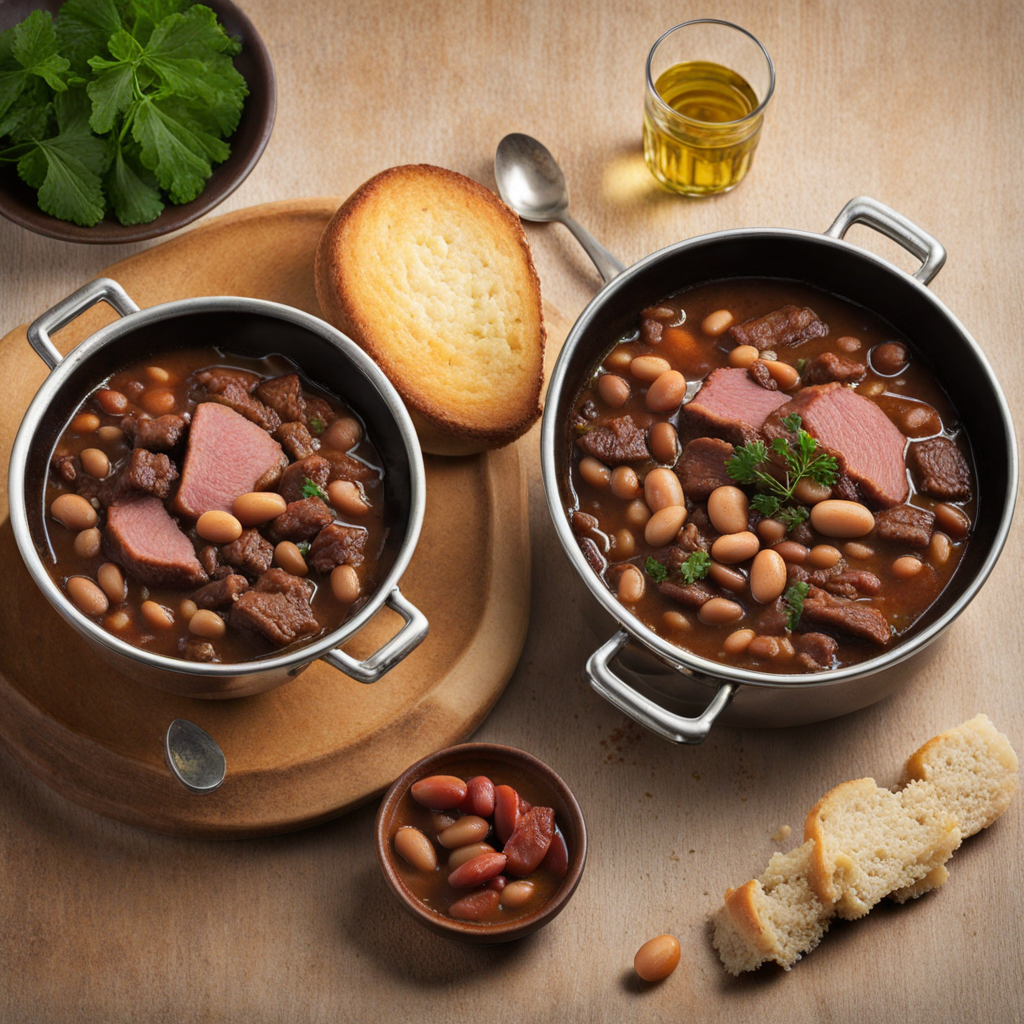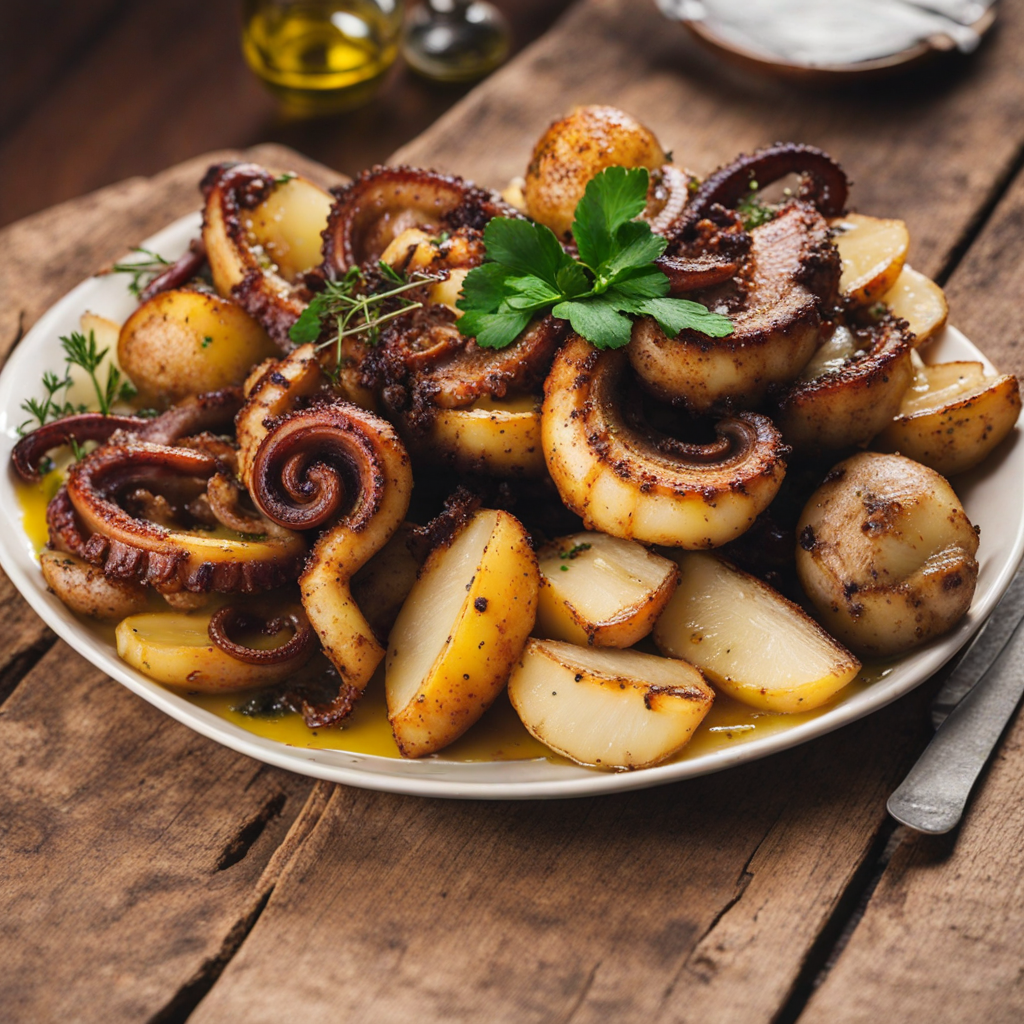Pastel de Nata
Pastel de Nata, a delightful Portuguese pastry, offers a unique taste experience that is both rich and comforting. At its core, this iconic treat features a flaky, buttery crust that encases a creamy custard filling. The pastry is baked until the edges are perfectly golden and crisp, while the custard achieves a luscious, velvety texture, often with a subtle caramelization on top. The contrast between the light, airy crust and the dense, silky filling creates an irresistible combination that entices the palate with each bite. Flavors of the Pastel de Nata are beautifully nuanced, with the custard infused with hints of vanilla and a touch of citrus zest, which adds a refreshing brightness to the richness. A sprinkle of cinnamon or a dusting of powdered sugar can enhance the experience, providing an aromatic warmth that complements the creamy custard. As you take a bite, the delicate balance of sweetness and creaminess becomes evident, leaving a lingering satisfaction that urges you to savor each moment. This pastry is not just a dessert; it embodies the spirit of Portuguese culture, often enjoyed with a cup of strong espresso or a glass of port wine. The experience of indulging in a Pastel de Nata goes beyond taste—it invites you to appreciate the craftsmanship of traditional baking techniques that have been perfected over generations. With every bite, you embark on a culinary journey that highlights the beauty of simple ingredients transformed into a beloved classic.
How It Became This Dish
The History of Pastel de Nata: Portugal's Iconic Custard Tart Pastel de nata, the beloved Portuguese custard tart, is more than just a dessert; it is a culinary emblem that carries with it a rich tapestry of history, culture, and tradition. With its flaky pastry crust and creamy, slightly caramelized filling, this treat has not only captured the hearts of the Portuguese but has also become a global sensation, symbolizing Portugal's culinary artistry. Origins: A Delicious Confluence of Cultures The origins of pastel de nata can be traced back to the 18th century in Portugal, a time when the country was undergoing significant social and economic changes. The creation of this delicacy is often linked to the Jerónimos Monastery in the Belém district of Lisbon, where Catholic monks were known to produce pastries to supplement their income. In a period marked by the rise of conventual cooking, these monks developed a recipe that combined egg yolks, sugar, and milk, all encased in a light, flaky pastry. The use of egg yolks in desserts has roots in the Iberian Peninsula's history, where egg whites were frequently used for clarifying wine and other purposes, leading to an abundance of leftover yolks. This culinary practice paralleled the rich traditions of the Middle Eastern and North African cultures that had influenced the Iberian Peninsula, particularly during the Moorish occupation from the 8th to the 15th centuries. The result was a unique fusion of flavors and techniques that would eventually give rise to pastel de nata. The Birth of a National Treasure The first known recipe for pastel de nata is believed to have been developed in the early 1800s. When the monks at the Jerónimos Monastery closed in 1820 due to the Liberal Wars in Portugal, the recipe was sold to a local sugar factory, where it was further refined. The pastry gained immense popularity, and in 1837, the first dedicated pastry shop, "Pastéis de Belém," was opened in the Belém district. This establishment remains operational today, drawing both locals and tourists eager to taste the original recipe. As the popularity of pastel de nata spread, it became a staple in bakeries across Portugal. Each region began to infuse its unique flair into the dessert, leading to variations in preparation and presentation. The classic pastel de nata is characterized by its crispy, burnt-edged pastry and rich custard filling, but variations emerged, with some bakers opting for additional spices like cinnamon or lemon zest to enhance the flavor profile. Cultural Significance Pastel de nata quickly transcended its humble beginnings to become a symbol of Portuguese culture. The tart represents the melding of tradition and innovation, embodying the spirit of Portuguese cuisine that celebrates simplicity while embracing rich flavors. It has a unique role in Portuguese social life, often enjoyed during coffee breaks, family gatherings, and celebrations. The tart's relationship with coffee is especially noteworthy. In Portugal, the combination of a pastel de nata with a bica (an espresso) is a cherished ritual. This pairing not only highlights the tart’s versatility but also showcases the Portuguese approach to food and drink—a balance of flavor and experience that invites conversation and connection. The global diaspora of Portuguese communities has also helped to spread the love for pastel de nata far beyond the borders of Portugal. As Portuguese explorers and immigrants settled in various parts of the world, they took their culinary traditions with them. This has led to the emergence of pastel de nata in countries such as Brazil, Canada, the United States, and Australia, each adapting the recipe slightly to accommodate local tastes while preserving its core essence. Development Over Time As pastel de nata gained international acclaim, its production methods and presentation continued to evolve. In the late 20th century, the tart began to appear in gourmet restaurants and bakeries worldwide, often being presented as an upscale delicacy. Chefs experimented with flavors, textures, and plating, creating variations that catered to contemporary palates while maintaining homage to the original. The rise of food tourism in the 21st century further propelled pastel de nata into the spotlight. Travelers seeking authentic culinary experiences often include a visit to a local pastelaria (pastry shop) to indulge in this iconic treat. The popularity of pastel de nata has also inspired various culinary competitions and events, celebrating the craft of pastry-making and the artistry behind this cherished dessert. In recent years, pastel de nata has also captured the attention of food influencers and social media, with visually appealing images flooding platforms like Instagram, leading to a resurgence of interest among younger generations. This digital age has allowed for the sharing of recipes and tips, enabling home bakers to attempt their versions of the tart, thus democratizing access to this Portuguese treasure. Conclusion: A Legacy of Flavor and Tradition Today, pastel de nata stands as a testament to the resilience and adaptability of culinary traditions. Its journey from the confines of a monastery to the bustling streets of Lisbon and beyond is a reflection of Portugal's rich history and its ability to embrace change while honoring its roots. The tart not only serves as a delightful indulgence but also as a cultural artifact that tells the story of a nation. As pastel de nata continues to evolve and inspire, it remains a beloved symbol of Portuguese identity—a sweet reminder of the past that invites everyone to come together over a shared love of food. Whether enjoyed on the cobblestone streets of Lisbon or in a cozy café halfway across the world, the pastel de nata endures as a delicious celebration of Portugal's culinary heritage, a legacy of flavor, and a beacon of cultural significance.
You may like
Discover local flavors from Portugal







